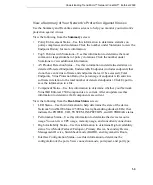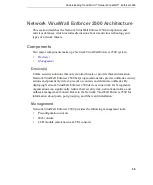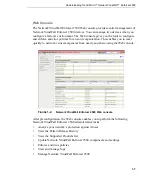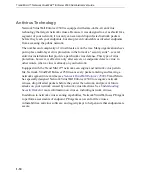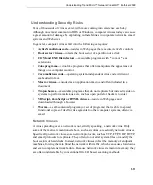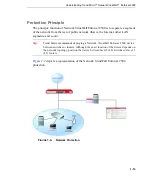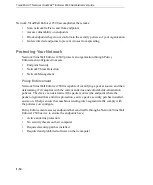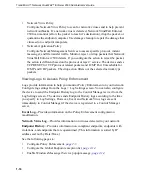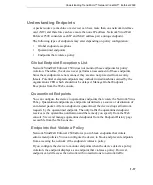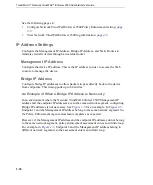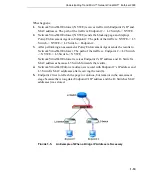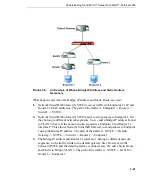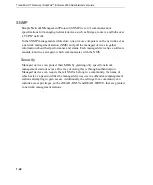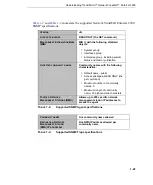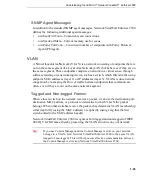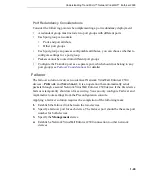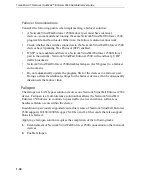
Understanding Trend Micro™ Network VirusWall™ Enforcer 2500
1
-
15
Policy Enforcement assesses the status of endpoint antivirus installations and
vulnerabilities by using the following components:
•
Exception list
Network VirusWall Enforcer 2500 does not monitor endpoints belonging to the
Policy Enforcement exception list for policy violations. Network VirusWall
Enforcer 2500 monitors endpoints that do not belong to the exception list based
on the traffic volume and connection rules. See
Global Endpoint Exceptions List
on page 1-17 for details about endpoints belonging to the exception list.
•
Endpoint Security
Network VirusWall Enforcer 2500 can scan endpoints to help prevent security
risks from entering the network. Network VirusWall Enforcer 2500 uses
PEAgent to perform assessments of endpoints. The device deploys PEAgent and
the agent registers itself as a Windows service and runs in the background.
You can configure policies to do the following:
•
scan endpoints to ensure the installation of antivirus software
•
scan network packets to prevent security threats from entering the network
•
ensure vulnerabilities are updated before allowing access to the network
•
specify required and prohibited registry keys to require or prohibit software
on endpoint computers
Configure Endpoint Notifications to send Windows Messenger Messages or
HTTP Messages to instruct Policy Enforcement to display endpoint notifications.
•
Web Notifications— use this feature to notify endpoints using a
browser.
•
Windows Messenger Service—use this feature to notify
Windows-based endpoints that are using any type of protocol (that is,
HTTP, FTP, telnet, and so on) to access a public network resource
Note:
This type of Network VirusWall Enforcer 2500 endpoint notification
uses the
Windows Messenger Service
. This feature does not require a
Windows messaging server (for example, Windows Messenger Server or
Live Communications Server) or instant messaging application (for
example, Windows Messenger or MSN Messenger) to send popup
notifications. If you use this feature, ensure that you have not disabled
this service on endpoints.



